All images © Sarmaya Arts Foundation
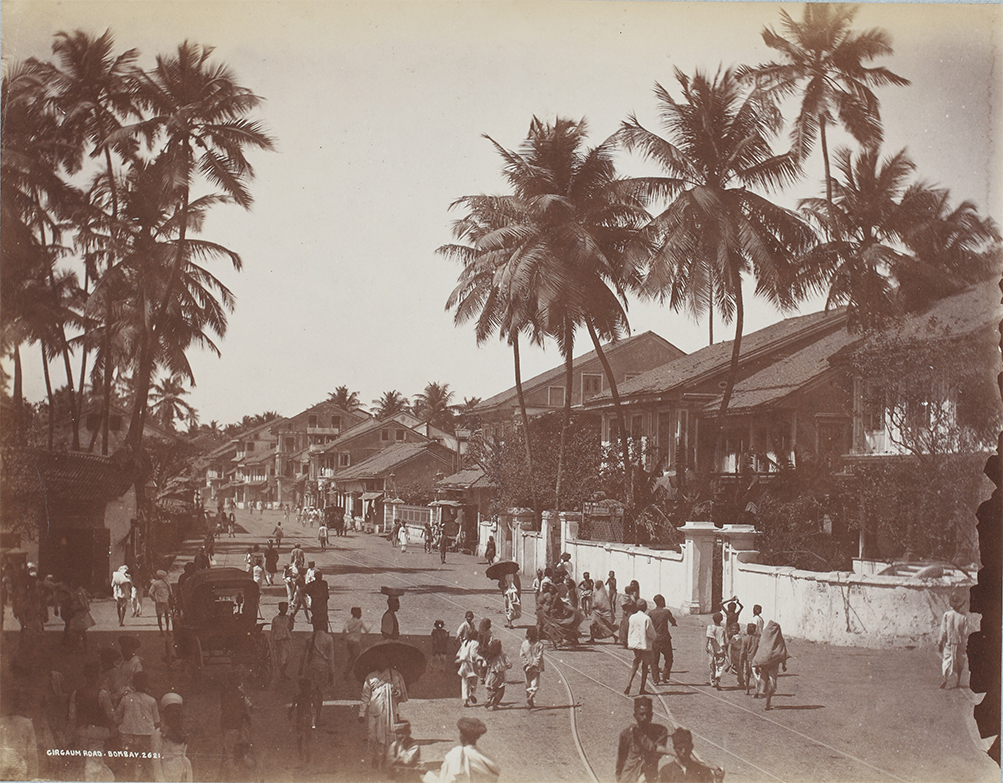
Girgaum Road, Bombay, c.1870s- 1900s, attributed to Bourne and Shepherd
Old photographs are like a voyage of discovery; you are amazed and bewildered at the same time to find something as ordinary as this view of Girgaum Road that existed right here in the bustling city of Mumbai, then Bombay. The sheer range of sentiments evoked by one photograph can give it the emotional force of a time machine. And if we did travel back in time to when this specific image was captured, the second half of the 19th century, we would land bang in the middle of a technological revolution. This is the period when photography started to flourish both as a medium of artistic expression and as an administrative tool in the capital of the Bombay Presidency. Luckily for us, early photographers froze countless moments from an era that saw changing cultural and actual landscapes.

Panoramic view of Bombay, c.1880s, attributed to Colin Murray for Bourne and Shepherd
Bombay in Focus
In December 1839, just a few months after the invention of the earliest photographic process in France, the Bombay Times was publishing tips on how readers could create their own daguerreotypes. By the early 1850s, a handful of daguerreotypists were in business in the city. While photography spread to all three metropolises of the Presidencies, certain factors accelerated its expansion in Bombay, as opposed to Calcutta and Madras.
Chief among these was the establishment in October 1854 of the first official Indian body dedicated to photography, with notable figures such as Governor Lord Elphinstone and Lady Canning serving as patrons. With over two hundred members drawn from varied professional backgrounds, the Bombay Photographic Society and its monthly journal became a successful platform for the exchange of knowledge between local amateurs and a floating population of expert practitioners.
A second factor was a growing desire among the British to validate and consolidate imperial control by creating exhaustive visual records of the foreign land they occupied. Having realized the novel use of photography in this role, the East India Company proposed to the Bombay government the establishment of training facilities for the emerging discipline in scientific and educational institutions as early as 1845. While the arrival of the camera speeded things along, the original photographic processes were not as straightforward as we’ve come to expect today. The daguerreotype method was a unique one, literally. Only one photograph could be produced—no negatives to make copies from—and even this involved a sound knowledge of chemistry as well as a strictly controlled environment. Soon newer, more refined and cost-effective methods such as the wet-collodion and albumen process replaced daguerreotypes and calotypes, thus expanding the reach of the medium. Between 1855 and ’57, Elphinstone College became one of the premier schools in the country to offer photography in its syllabus.
While government orders to promote the art took the route of school curricula, the Bombay Photographic Society’s exhibitions in the 1850s exposed the city’s general population to its first wave of photographers. Among the notables there were: Narayan Daji, a medical practitioner, who was known for his technically superior work, especially his portraits; William Johnson, a Civil Services officer, who contributed his images to numerous publications; Thomas Biggs of the Bombay Artillery, who was appointed as the government photographer and documented the historical sites of Western India in this role; and Hurrichund Chintamon, an Elphinstone College alum, who went on to become one of the first Indians to run a thriving photo studio.
A City Framed
Among the most popular subjects of Bombay’s earliest photographs were the city’s architecture, landscape, its burgeoning trade and industry, and, of course, its locals.
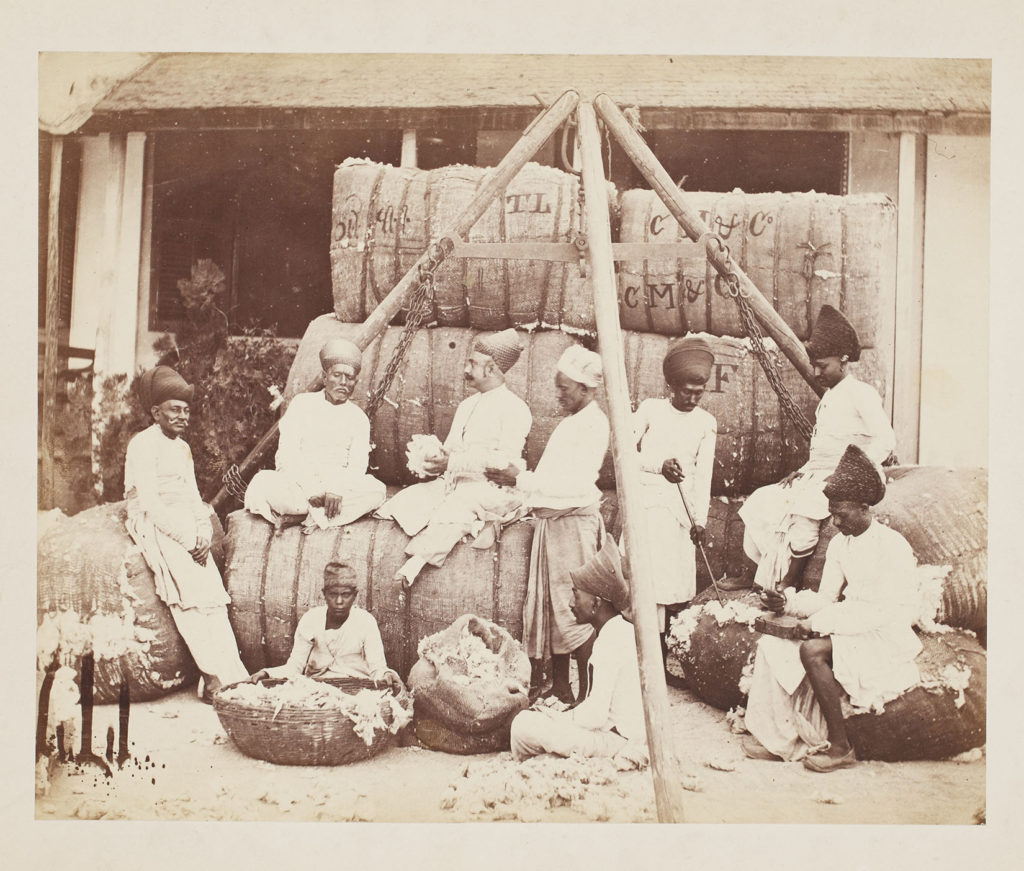
The Cotton Market, from ‘The Photographs of Western India’ (Vol.1), 1855-1862, by William Johnson. First published in The Indian Amateur’s Photographic Album, c. 1856–58, by William Johnson and William Henderson
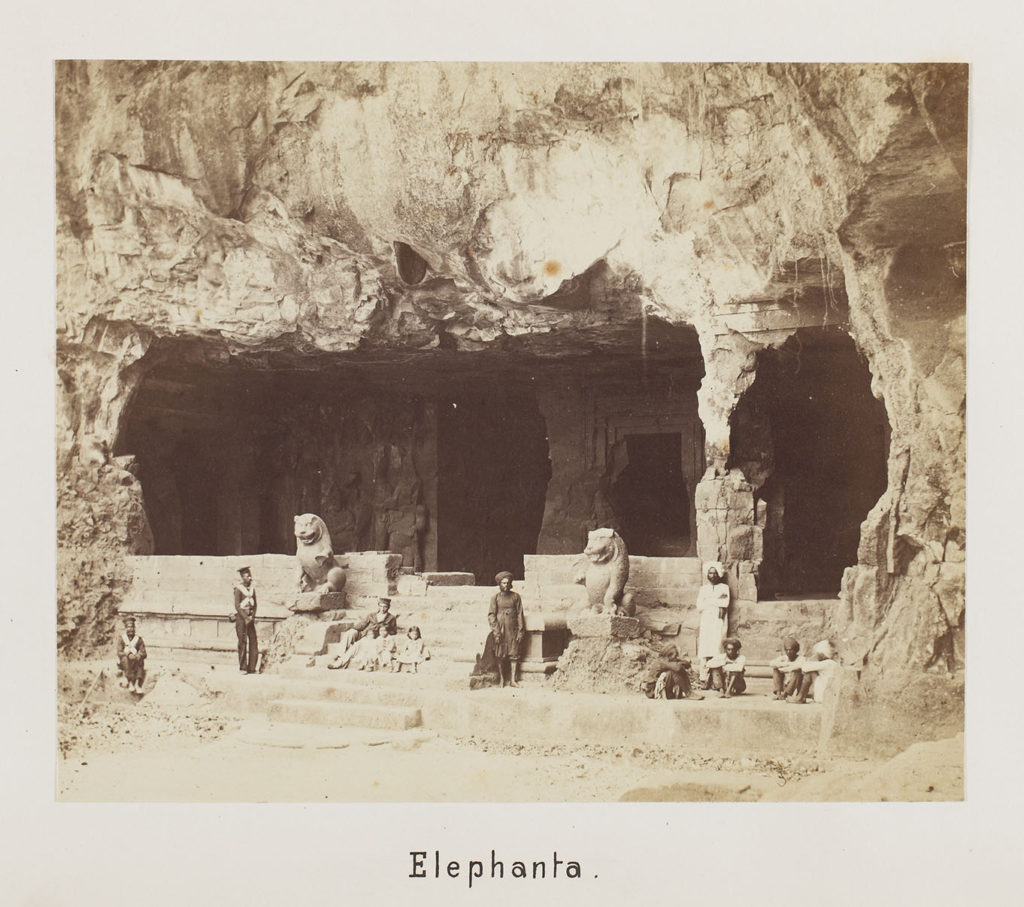
Caves of Elephanta – 5. The Northern Aisle, from ‘The Photographs of Western India’, (Vol.2), 1855-1862, by William Johnson and William Henderson
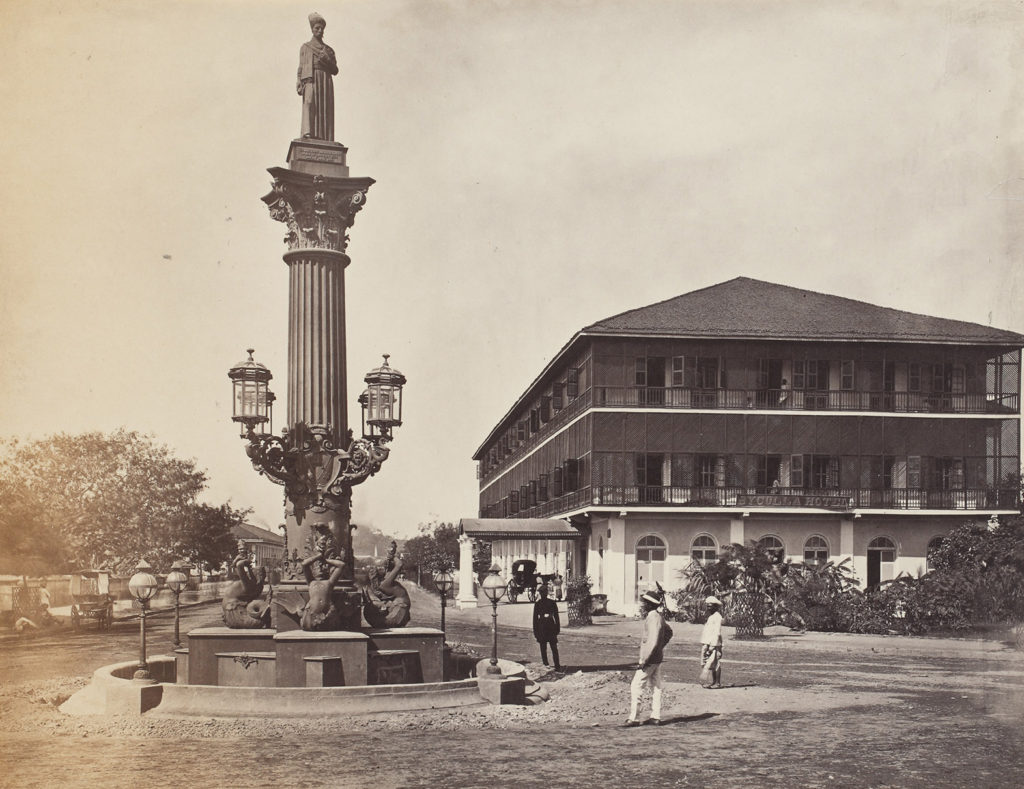
Byculla Hotel (Statue of Seth Cursetjee Manockjee popularly known as Khada Parsi in the foreground), Bombay, c.1855-1870, by Francis Frith
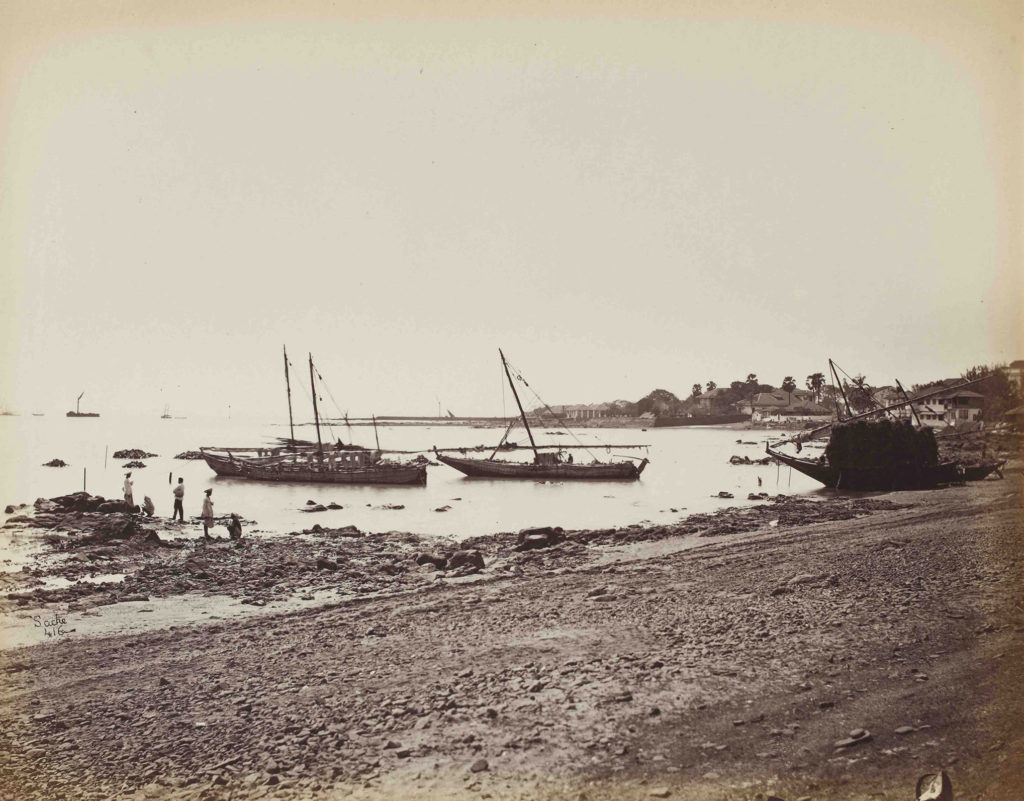
Back Bay, Bombay, c.1860s, by J E Saché
Following the Uprising of 1857, the British started to use photography to gather data on races, castes and communities to better understand the ethnic diversity of the subcontinent. William Johnson, an ardent exponent of ethnographic portraiture, produced some of the early compendiums on this vast subject —like, Photographs of Western India (1855-62) and The Oriental Races and Tribes, Residents and Visitors of Bombay (1863 & 1866), which contained a wide range of images of Bombay and its inhabitants.
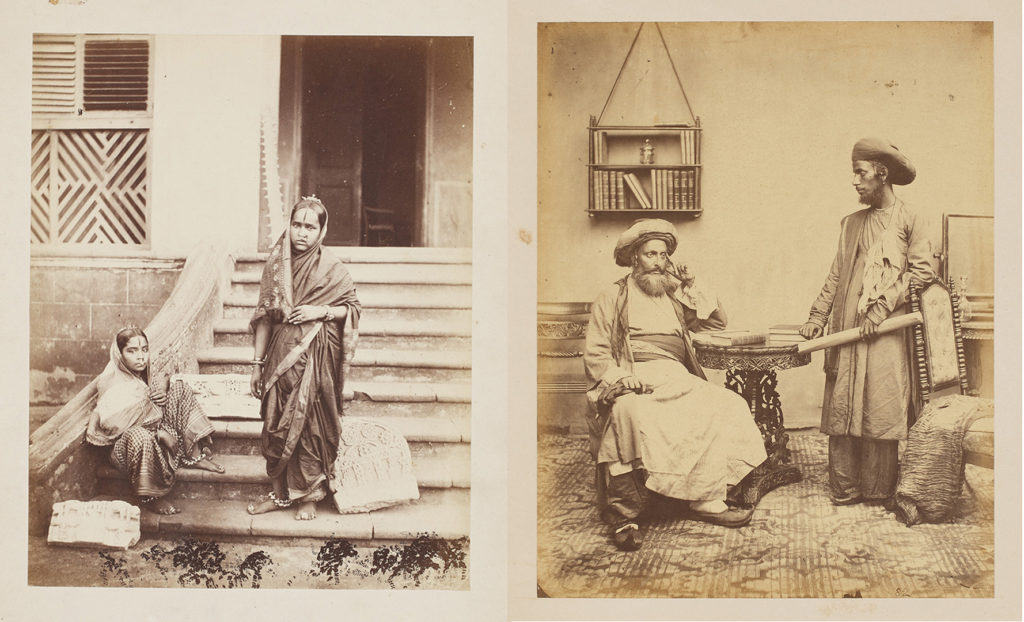
(left) Canarase Brahmin Women, Bombay; (right) Bene Israel Teachers, Bombay, by William Johnson, 1855-62, from ‘Photographs of Western India. Volume I. Costumes and Characters’
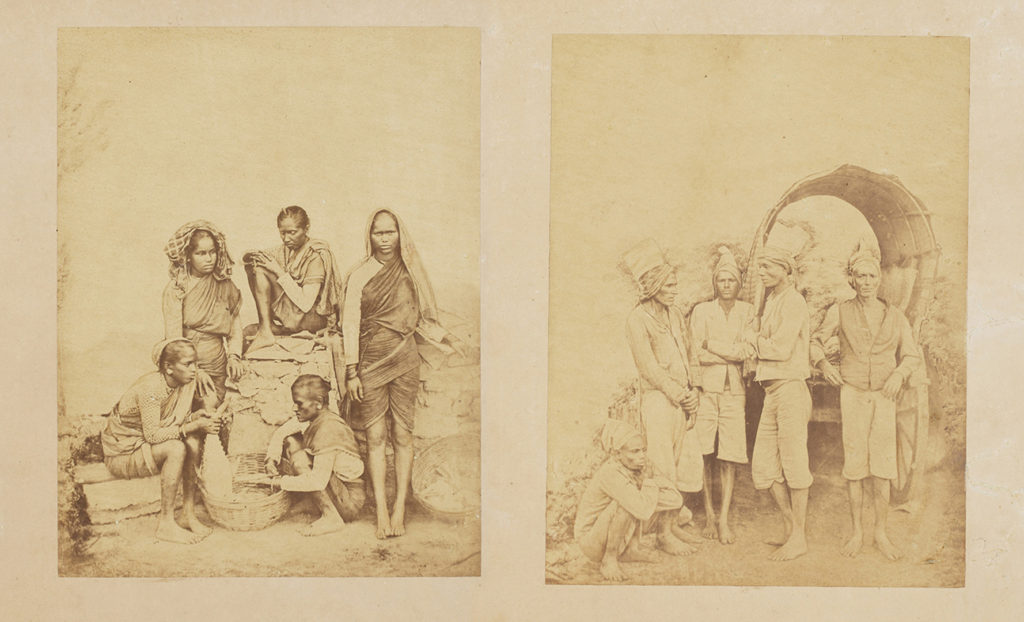
(left) Fisherwomen of Bombay; (right) Coonbies (Roman Catholics of Salsette), by William Johnson, 1863-66, ‘The oriental races and tribes, residents and visitors of Bombay’, (London: W.J. Johnson)
In the midst of increasing cotton trade and other mercantile activities, the city was transforming into a ‘Gateway of India’ by the late 19th-century. New buildings, industrial centres and broad avenues began to take shape and increasingly, the camera started to focus on these urban masterpieces, symbols of rapid development.

Panoramic view of the Elphinstone circle, Bombay, c.1880s, attributed to Bourne and Shepherd
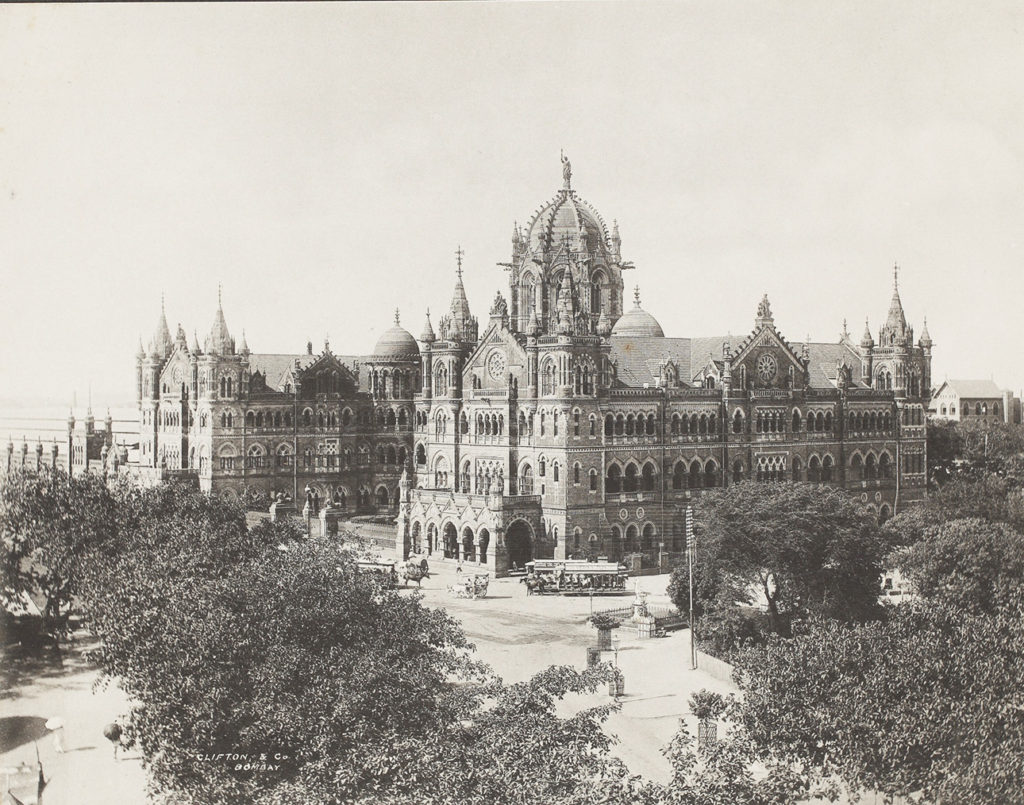
Bombay Station (Victoria Terminus), c.1890-1930s, by Clifton & Co
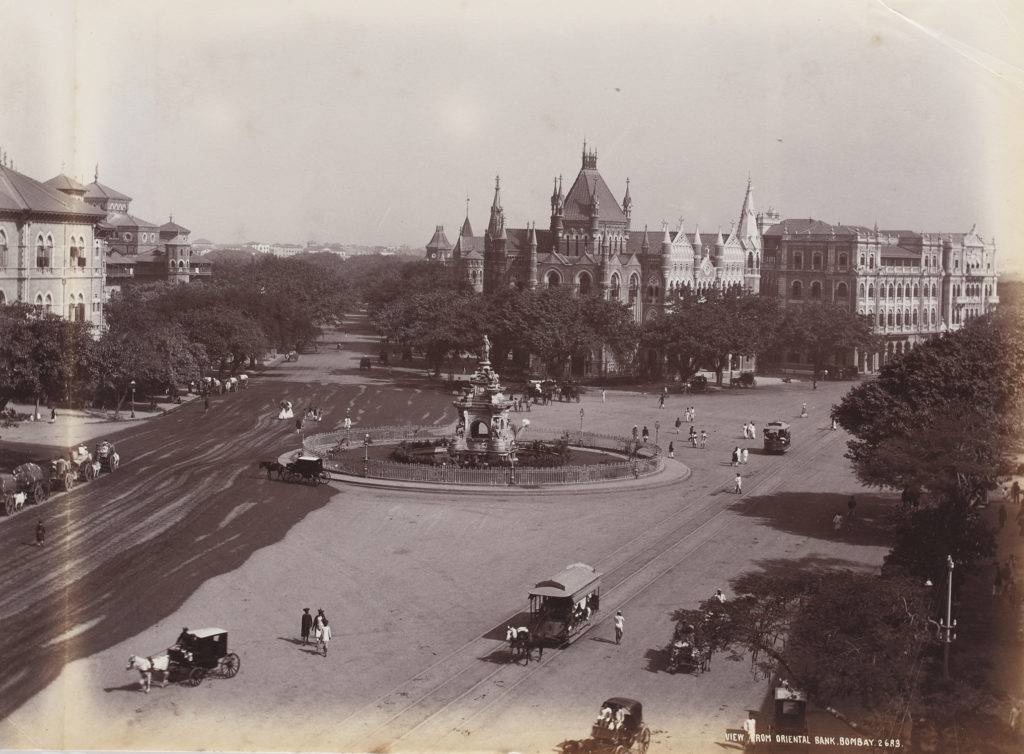
View from the Oriental Bank, Bombay, c.1870s- 1900s, by unidentified photographer
From Bombay, With Love
By the early 1860s, the Bombay Photographic Society ceased to exist. However, photographs of Bombay and its surroundings were being published in increasing numbers commercially to supply city souvenirs to visitors and European residents. As access to photography grew, more people wanted their personal and family portraits to be preserved as keepsakes. The studio’s ability to choreograph a beautiful setting, to reproduce images for posterity in any number and any style, and to print photographs in any size and for any purpose, made them popular among people from all walks of life. The early crop of studios owned by photographers like Narayan Daji, William Henderson and Hurrichund Chintamon were now joined by new ones.
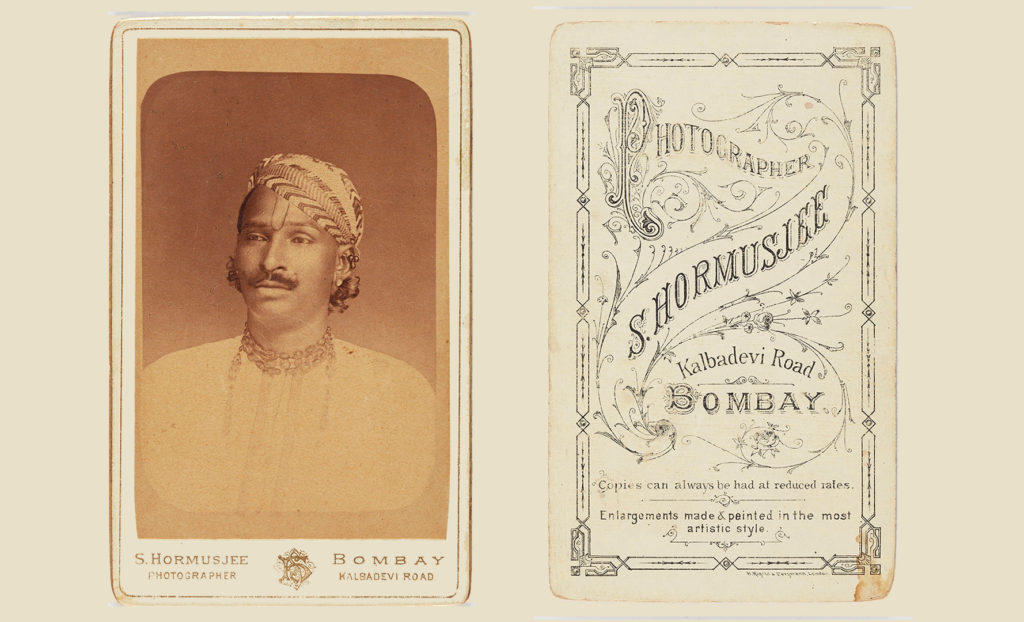
Portrait of a man, c.1880s-1890s, by S Hormusji, Bombay; (right) Verso of CdV, c.1880s-1890s, by S Hormusji, Bombay
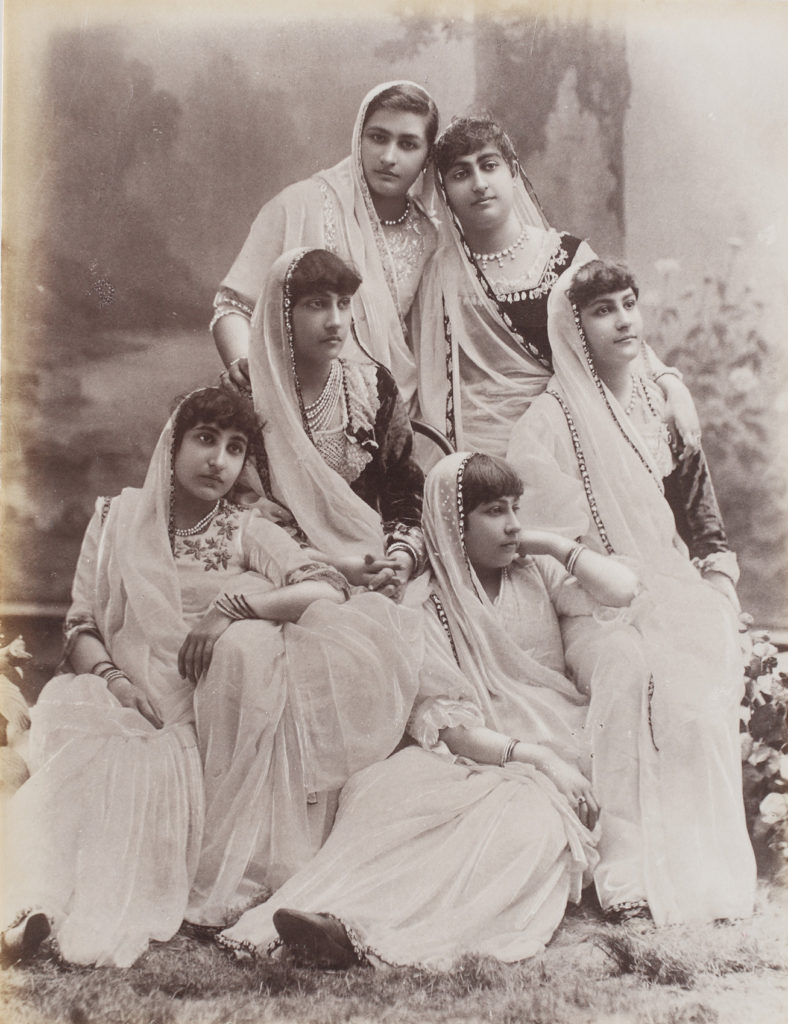
‘Parsee Ladies’, Bombay, c.1890s, attributed to Edward Taurines
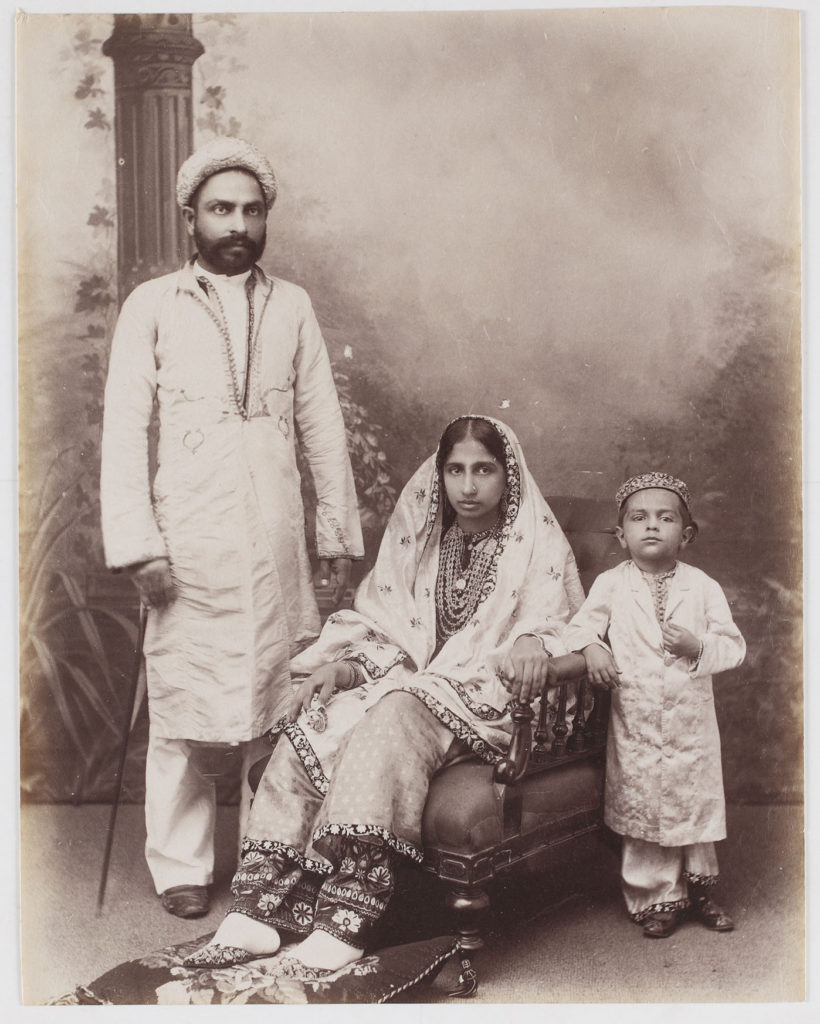
‘Bohra Family’, Bombay, c.1890s, attributed to Edward Taurines
By the 1870s, commercial photography was strongly established in Bombay. Many specialized studios flourished across places like Kalbadevi Road, Medows Street (since christened Nagindas Master Road) and Rampart Row, which is the area today known as K Dubhash Marg and Kala Ghoda. This is evident from one of our most recent acquisitions here at Sarmaya: the album of an unidentified Parsi family album with portraits in cartes-de-visite and cabinet card format. While the album represents a singular family from Bombay, the back of the photos are replete with information about the studios where this family chose to get their pictures taken, each completely different from the other in terms of addresses and aesthetics.
One of the best ways to earn about older studios is through the lithographic back (verso) on card-mounted photographs. They show the growth of the medium and also contain clues to the specialities of individual studios.
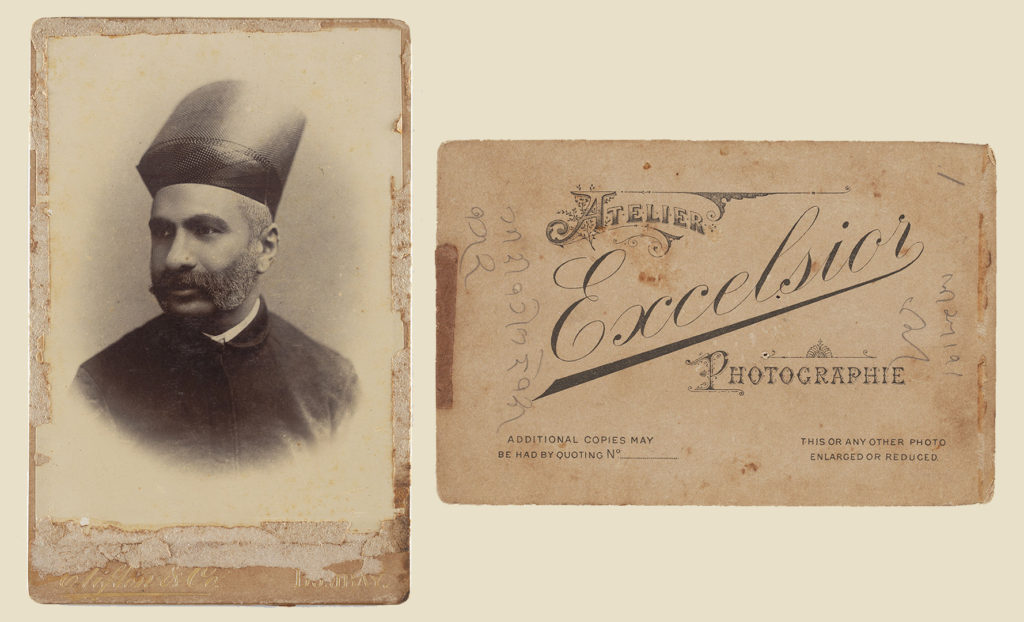
(left) Portrait of a Parsi man, by Clifton & Co, Bombay; (right) Lithographic inscription on the verso of a cabinet card, Clifton & Co, Bombay
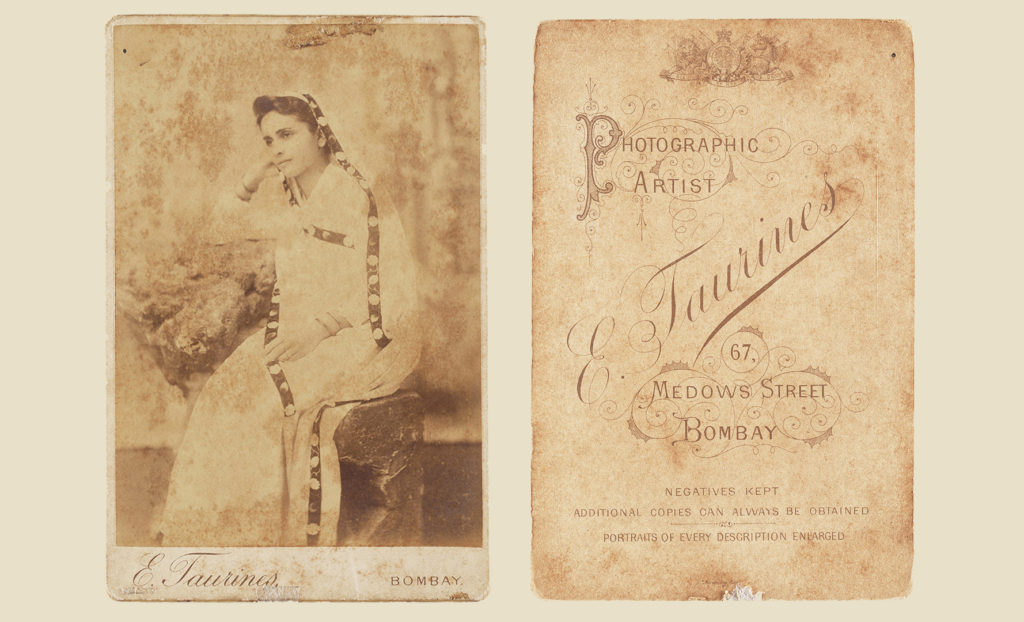
(left) Portrait of a Parsi Woman by E Taurines; (right) Lithographic inscription on the verso of a cabinet card, E Taurines, Medows Street, Bombay
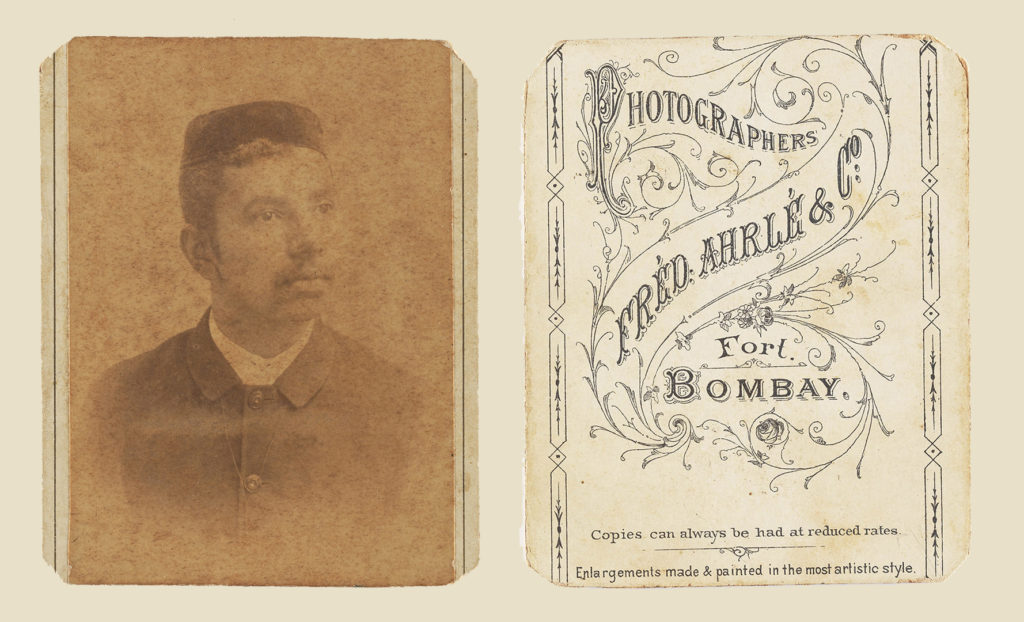
(left) Portrait of a Parsi Man by Fred Ahrle; (right) Lithographic inscription on the verso of a cabinet card, Fred Ahrle & Co, Fort, Bombay
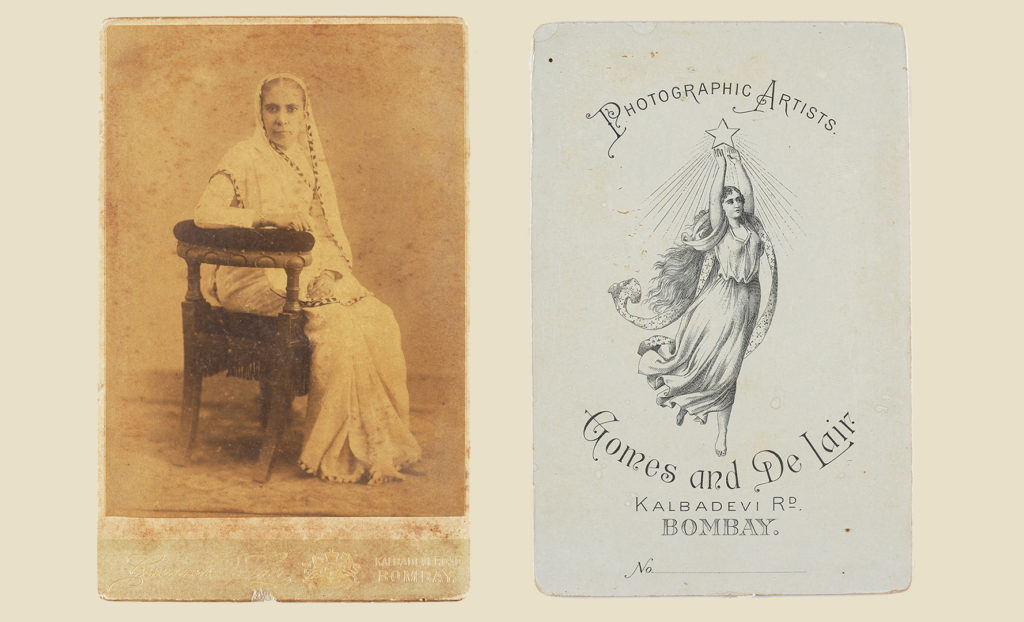
(left) Portrait of a Parsi lady, by Gomes and De Lair; (right) Lithographic inscription on the verso of a cabinet card, Gomes and De Lair, Kalbadevi, Bombay
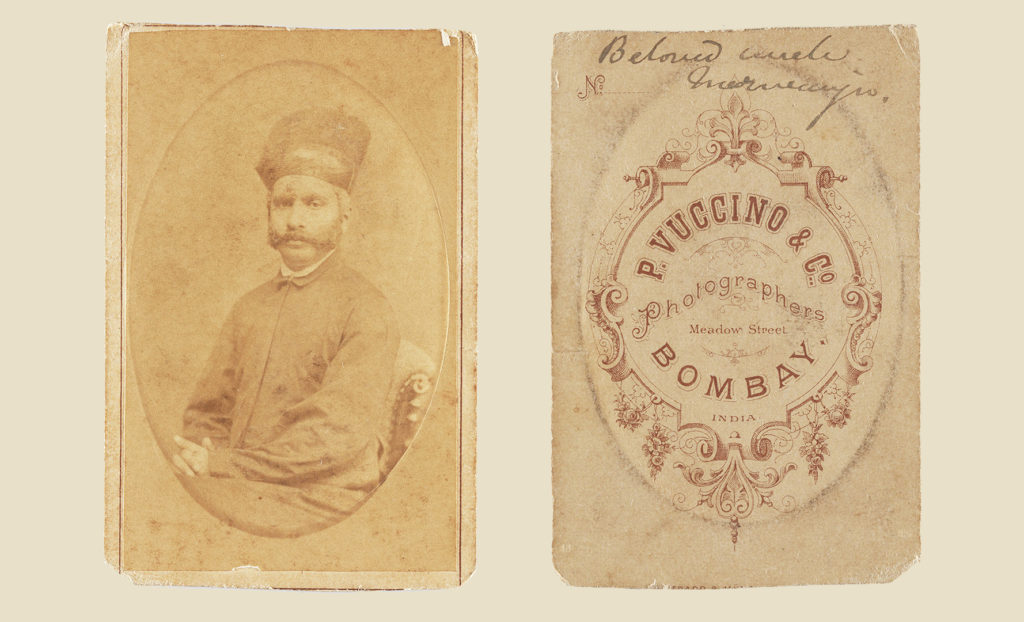
(left) Portrait of a Parsi man by P Vuccino & Co; (right) Lithographic inscription on the verso of a cabinet Card, P Vuccino & Co, Medows Street, Bombay
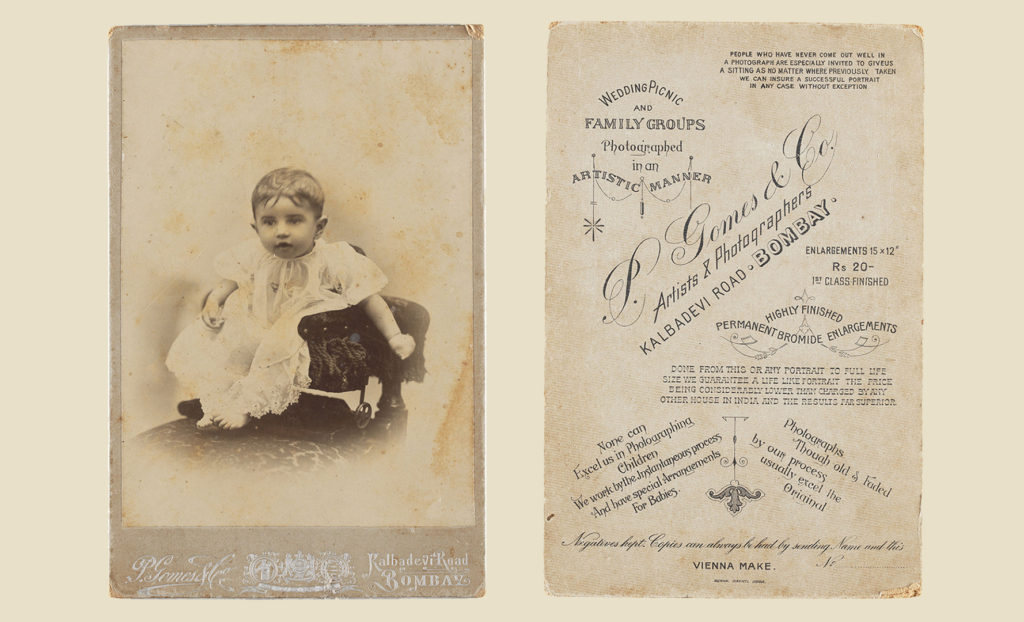
(left) Portrait of an infant by P Gomes & Co; (right) Lithographic inscription on the verso of a cabinet card, P Gomes & Co, Kalbadevi Road, Bombay
Prominent figures in Indian photography like Samuel Bourne and Lala Deen Dayal also expanded their businesses and established their studio franchises in Bombay in 1870 and 1897, respectively.
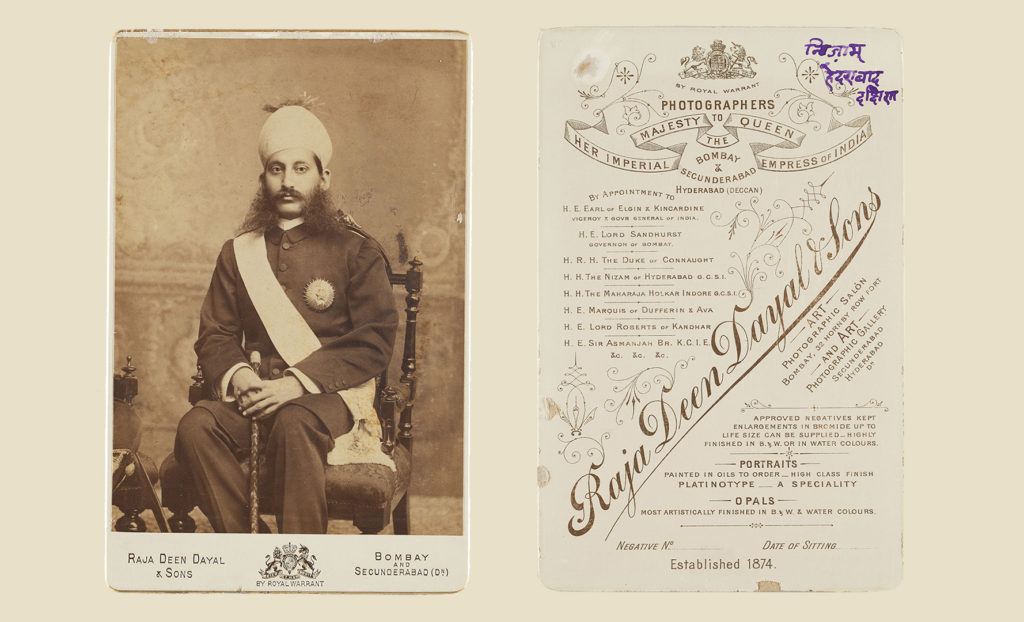
(left) Mahboob Ali Khan and Raja Deen Dayal & Sons Studios; (right) Raja Deen Dayal & Sons Studios, Hornby Road (now Dadabhai Naoroji Road)
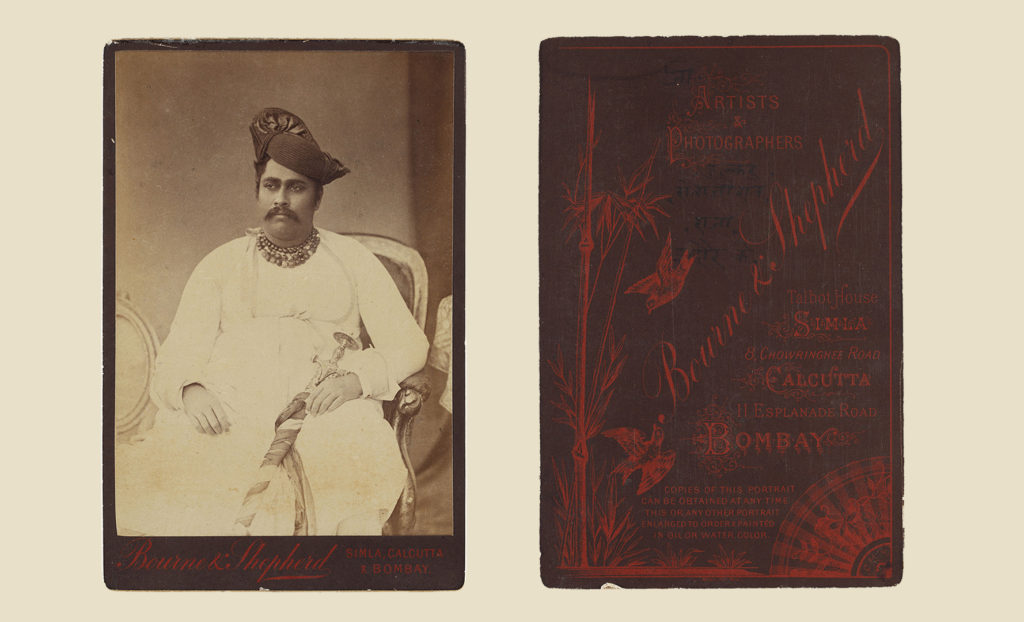
(left) Portrait of Maharaja Shiwaji Rao Holkar of Indore by Bourne & Shepherd; (right) Bourne and Shepherd, 11 Esplanade Road, Bombay
Among the other well known studios and photographers that flourished in Bombay and made a mark across the Presidency were Pestunjee Dosabhoy who became an active photographer in the Nizam’s Dominion during the late 1860s, and Vernon & Co. who ran a studio facing the very exclusive Watson’s Hotel in Kala Ghoda. But outnumbering all the great lensmen are the legion we acknowledge only as ‘unidentified photographer’. Nameless they may be, but these chroniclers too have achieved a kind of immortality through their images, which allow us to imagine what India’s most populous city might have felt like at the turn of the 20th century. Pristine, progressive and poised for greatness.
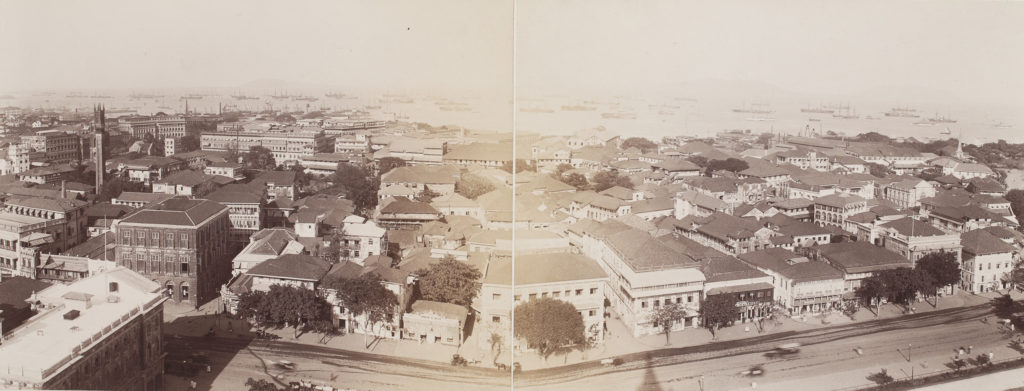
Panoramic view of Fort, Bombay, c.1870s-1900s, unidentified photographer
Komal Chitnis is Collections Manager at Sarmaya
References
- Janet Dewan, Sun Pictures from the City of Gold: Early Photography in Bombay. In Bombay To Mumbai, Changing Perspectives, edited by Pheroza Godrej, Rahul Mehrotra and Pauline Rohatgi, 112-127. The Marg Foundation , 2007.
- Ray Desmond, Photography in Victorian India. Journal of the Royal Society of Arts 134, no. 5353 (1985): 48-61.
- Susan Hapgood, Early Bombay Photography. Mapin Publishing Pvt. Ltd and Contemporary Arts Trust, Mumbai, 2015.
- John Falconer, A Passion for Documentation: Architecture and Ethnography . In India Through the Lens: Photography 1840-1911, by Vidya Dehejia, 69-117. Mandala Publishing , 2006.
- Akshaya Tankha, Early Precedents, Ethnographic Photography in Bombay, 1855-1870. In The Artful Pose, Early Studio Photography in Bombay, c. 1855-1940, 27-41. Ahmedabad: Mapin Publishing Pvt. Ltd, 2010.
- Rahaab Allana, From Bombay to Mumbai, Studios of the City. In The Artful Pose, Early Studio Photography in Mumbai, c.1855-1940, 75-79. Ahmedabad: Mapin Publishing Pvt. Ltd, 2010.
- Suryanandini Sinha, “Facing the Lens, Women in Bombay’s Photographic Studios .” In The Artful Pose, Early Studio Photography in Mumbai, c.1855-1940, 43-55. Ahmedabad: Mapin Publishing Pvt. Ltd, 2010.



